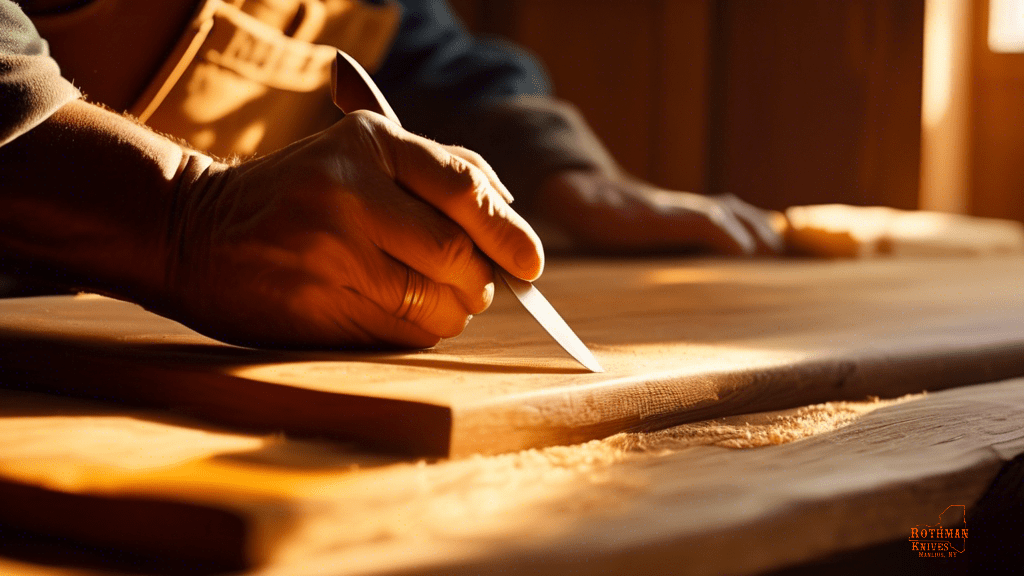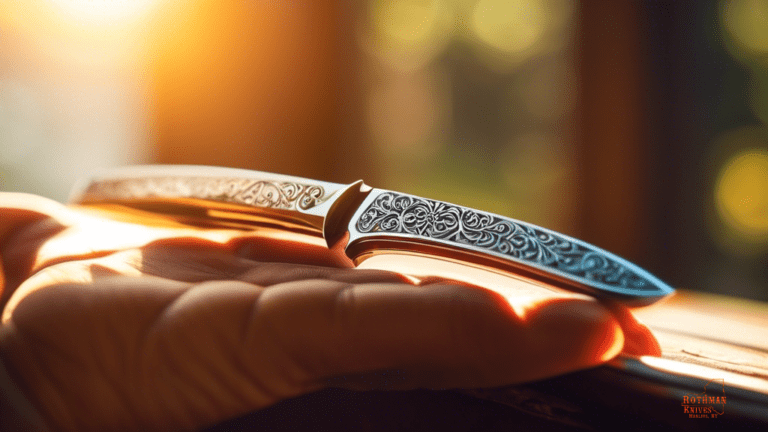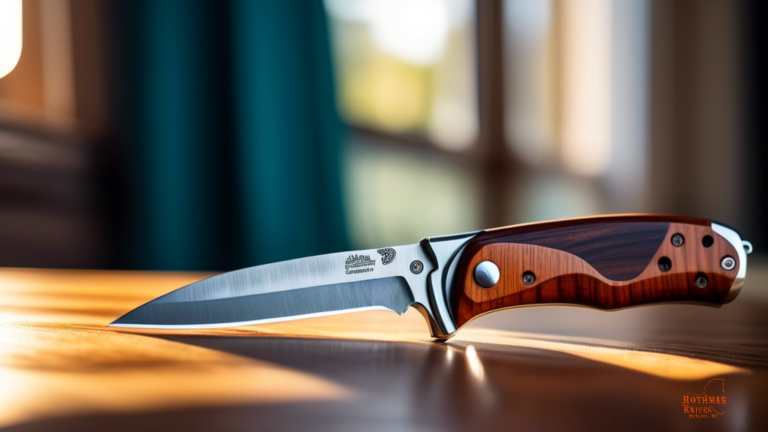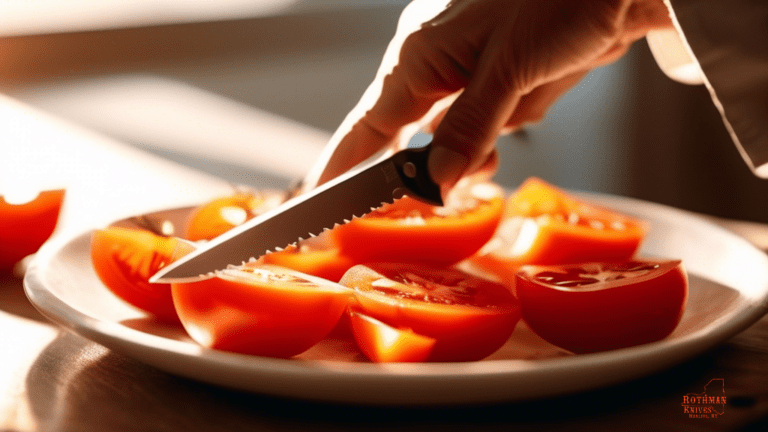When it comes to expressing your creativity through whittling, having the right knife can make all the difference in bringing your vision to life.
Whether you’re a beginner looking to hone your skills or an experienced whittler seeking to upgrade your tools, finding the best whittling knife for your creative projects is essential.
With a variety of factors to consider, from blade types to ergonomic design, choosing the perfect knife can be a fun and rewarding process that will enhance your whittling experience.
As you embark on your search for the ideal whittling knife, it’s important to consider factors such as the type of blade that best suits your projects and the ergonomic design that will provide comfort and precision as you work.
Regular maintenance and sharpening are also key aspects to keep in mind to ensure that your knife remains in top condition for years to come.
With the right whittling knife in hand, you’ll be ready to unleash your creativity and bring your artistic visions to life with every carve and cut.
Factors to Consider When Choosing a Whittling Knife
When choosing a whittling knife, it’s important to consider factors like blade length, handle material, and blade shape to ensure it’s the best tool for your creative projects.
The blade length should be suitable for the size of the projects you plan to work on, allowing for precision and control. A longer blade may be more versatile for larger pieces, while a shorter blade could be better for intricate details.
Handle material is another crucial factor to consider when selecting a whittling knife. The handle should feel comfortable in your hand, providing a good grip and reducing hand fatigue during long carving sessions.
Additionally, the blade shape plays a significant role in the type of cuts you can make. A straight blade is ideal for making straight cuts, while a curved blade may be better for shaping rounded edges.
By considering these factors, you can choose a whittling knife that not only meets your needs but also enhances your creative projects.
Types of Blades for Different Whittling Projects
For different whittling projects, consider using a blade as sharp and precise as a surgeon’s scalpel.
The type of blade you choose can greatly impact the outcome of your creations.
Here are some common types of blades used for different whittling projects:
- Detail Knife: Perfect for intricate designs and delicate work.
- Hook Knife: Ideal for carving out rounded shapes and concave cuts.
- Roughing Knife: Great for initial shaping and removing larger chunks of wood.
- Chip Carving Knife: Designed specifically for creating intricate designs through small chips and cuts.
Choosing the right blade for your specific project can make a world of difference in your whittling experience.
Each type of blade has its own unique strengths and purposes, so be sure to match the blade to the task at hand.
By understanding the different types of blades available, you can elevate your whittling skills and create stunning works of art that showcase your creativity and talent.
Ergonomic Design for Comfort and Precision
Crafting with a well-designed knife can help you achieve more intricate details with less strain on your hands. When you’re engrossed in your whittling projects, the last thing you want is discomfort or hand fatigue slowing you down.
That’s where the importance of ergonomic design comes into play. A whittling knife with a comfortable grip and a blade that is easy to control can make a world of difference in how smoothly your carving process goes.
Imagine holding a knife that feels like an extension of your hand, allowing you to carve with precision and ease. An ergonomically designed whittling knife not only enhances your comfort but also boosts your confidence in your creative abilities.
With the right knife in your hand, you’ll find yourself fully immersed in your projects, effortlessly bringing your ideas to life. So, when choosing a whittling knife, remember that comfort and precision go hand in hand to elevate your crafting experience.
Maintaining and Sharpening Your Whittling Knife
To keep your blade sharp and ready for carving, make sure to regularly maintain and sharpen it. This will ensure that your whittling knife remains in top condition for all your creative projects.
Here are some tips to help you with maintaining and sharpening your whittling knife:
-
Regular Cleaning
- Wipe down your knife after each use with a clean cloth to remove any debris or residue.
- Use a mild soap and warm water to clean the blade gently, making sure to dry it thoroughly afterwards.
-
Sharpening Techniques
- Invest in a quality sharpening stone to maintain the edge of your blade.
- Practice proper sharpening techniques, such as using consistent angles and applying even pressure to achieve a sharp edge.
By incorporating these maintenance and sharpening practices into your routine, you’ll be able to enjoy smooth and precise carving with your whittling knife for years to come.
Remember, a well-cared-for blade is a key tool for your creative endeavors.
Top Recommendations for Whittling Knives
Discover some top recommendations for whittling knives that’ll inspire your artistic endeavors.
The Flexcut Carving Jack is a versatile option that offers multiple blades in one compact tool, perfect for carving on the go. Its ergonomic design ensures comfort during long carving sessions, allowing you to focus on bringing your creative visions to life.
Another excellent choice is the Morakniv Wood Carving 120, known for its high-quality carbon steel blade that holds a sharp edge for precise cuts. This reliable tool is a favorite among seasoned woodcarvers for its durability and exceptional performance.
If you’re looking for a reliable and budget-friendly option, the BeaverCraft S15 Whittling Knife Set is a great choice. This set includes three different knives, each with a comfortable wooden handle and sharp blade, ideal for beginners and experienced carvers alike.
For those seeking a premium option, the Helvie Detail Knife is a top-of-the-line tool that offers unparalleled precision and control. Its fine-tipped blade allows for intricate details and delicate cuts, making it a must-have for intricate projects.
With these top recommendations, you’ll have the perfect whittling knife to enhance your creative journey and create stunning works of art.
Frequently Asked Questions
Can a whittling knife be used for other types of carving projects, such as relief carving or chip carving?
Yes, a whittling knife can be used for other carving projects like relief carving or chip carving. It offers a versatile tool for your creative endeavors, allowing you to explore different techniques and styles with ease.
Are there any safety precautions or tips to keep in mind when using a whittling knife?
When using a whittling knife, always keep your fingers away from the blade’s path. Use a carving glove for added protection. Make sure to carve in the direction away from your body to prevent accidents.
How do you know when it’s time to sharpen your whittling knife, and what tools are best for sharpening it?
When your whittling knife starts to snag or tear wood instead of smoothly slicing through, it’s time to sharpen it. Use a sharpening stone or sandpaper to restore the blade’s edge for optimal carving performance.
Are there any specific techniques or grips that are recommended for using a whittling knife effectively?
To use a whittling knife effectively, hold it with a firm grip and use controlled, steady movements. The pinch grip and the thumb push are common techniques that can help you achieve precise cuts in your projects.
Can left-handed individuals use the same whittling knives as right-handed individuals, or are there specific knives designed for left-handed users?
Yes, left-handed individuals can use the same whittling knives as right-handed users. Look for knives with ambidextrous handles or symmetrical blade shapes. Practice and adapt techniques to suit your dominant hand for a comfortable whittling experience.
Last Updated: July 15, 2024
Verified and Approved by:

Mike Rothman
Founder of Rothman Knives
Like This Article?
Share with your friends
Table of Contents
Latest Articles
Keep Reading
-
Unique And Custom Designs For Folding Pocket Knives
Explore the world of unique and custom folding knife designs, featuring intricate engravings and innovative materials. Find your perfect blade today and stand out from the crowd with a one-of-a-kind pocket knife!
-
Customized Folding Knives: Uniquely Crafted Multi-tool Pocket Knives
Looking for a stylish and functional multi-tool pocket knife? Explore our uniquely crafted Customized Folding Knives for the perfect blend of style and functionality. Upgrade your EDC with our premium collection today!
-
Unveiling The Scary Sharp Method: Razor-Sharp Results
Unveil the secrets of the Scary Sharp Method and achieve razor-sharp results effortlessly! Learn how to sharpen like a pro now for precision cuts every time. Click here to master this game-changing technique!




